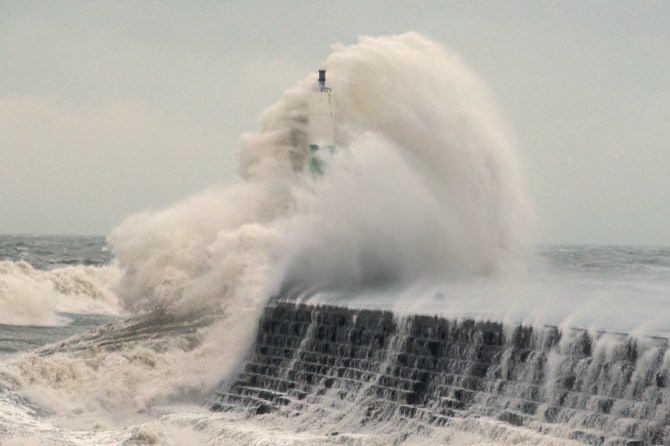It is also pumpkin and apples season. Though I am a devoted coffee drinker, I do enjoy and savor an excellent cup of tea pared with a perfect scone.
California Classic Pumpkin Scones
Prep Time: 20 minutes
 Cook Time: 25 minutes
Cook Time: 25 minutes Total Time: 45 minutes
Yield: 8 scones
Description
Deliciously spiced classic pumpkin scones are flaky and soft with perfectly crumbly edges. Top with coarse sugar for extra crunch and maple icing for extra decadence!
Ingredients
2 cups (250g) all-purpose flour (spoon & leveled)
2 and 1/2 teaspoons baking powder
1 teaspoon ground cinnamon
1 and 1/2 teaspoons pumpkin pie spice*
1/2 teaspoon salt
1/2 cup (115g) unsalted butter, frozen
1/3 cup + 2 Tablespoons (105ml) heavy cream, divided
1 large egg
1/2 cup (115g) canned pumpkin puree, blotted*
1/2 cup (100g) light brown sugar
1 teaspoon pure vanilla extract
optional: coarse sugar for sprinkling on top before baking
Maple Glaze
2 Tablespoons (30g) unsalted butter
1/3 cup (80ml) pure maple syrup
1 cup (112g) sifted confectioners’ sugar
pinch salt, to taste
Instructions
Preheat oven to 400°F (204°C). Adjust baking rack to the middle-low position. Line 1 or 2 large baking sheets with parchment paper or silicone baking mat(s). If making mini scones, I use 2 baking sheets. Set aside.
Make the scones: Whisk the flour, baking powder, cinnamon, pumpkin pie spice, and salt together in a large bowl. Grate the frozen butter (I use a box grater). Add the grated butter to the flour mixture and combine it with a pastry cutter, a fork, or your fingers until the mixture comes together in pea-sized crumbs. Set aside.
Whisk 1/3 cup (75ml) heavy cream, the egg, blotted pumpkin (see note), brown sugar, and vanilla extract together in a small bowl. Drizzle it over the flour mixture and then mix it all together until everything appears moistened.
With floured hands, work the dough into a ball as best you can and transfer onto a floured work surface. Press into a neat 8-inch disc and, with a very sharp knife, cut into 8 equal wedges. To make smaller scones, press dough into two 5-inch discs and cut each into 8 equal wedges.
Place scones at least 2 inches apart on the prepared baking sheet(s). Using a pastry brush, brush scones with remaining heavy cream and sprinkle with coarse sugar, if desired. (Gives a nice crunch!)
Bake the larger scones for 20-25 minutes or until lightly browned. If you made 16 smaller scones, bake for 18-20 minutes or until lightly browned. Remove from the oven and allow to cool for a few minutes as you prepare the icing.
Make the glaze:
In a small saucepan over low heat, melt the butter and maple syrup together, whisking occasionally. Once the butter has melted, remove from heat, and whisk in the sifted confectioners’ sugar. Taste and add a pinch of salt if desired. Drizzle over warm scones.
Scones are best enjoyed right away, though leftover scones keep well at room temperature or in the refrigerator for 2 extra days.
Notes
Pumpkin Pie Spice: Instead of prepared pumpkin pie spice, you can use 1/2 teaspoon each: ground allspice and ground ginger AND 1/4 teaspoon each: ground nutmeg and ground cloves.
Blotting Pumpkin: Using a paper towel or clean kitchen towel, lightly blot the pumpkin puree to remove some of the moisture before using in the recipe. The more moisture removed, the less moist and muffin-like the scones will taste. We want the scones to be flaky and crumbly, not super moist or muffin-like. I prefer to squeeze lots of moisture out so the scones taste textured and delicious. Do what you prefer!
My Tea Parings:
Assam Black Tea - Mokalbari Estate
English Breakfast Black Tea – Organic
Do you have a favorite Autumn recipe?
Or a favorite tea you sip while reading a novel from one of the BooksWeLove authors?
I enjoy sitting in my favorite reading chair is in my bedroom. The chair is a soft gray color. I snuggle under my violet afghan with my slippered feet on the ottoman. The Autumn light shimmers though my patio doors while I sip my tea from my Royal Albert china cup.
Happy October Everyone,
Connie
To purchase my books:
https://www.overdrive.com/search?q=connie+vines
https://books2read.com/Brede























